White Guys on Campus
The American Campus
Series editor, Harold S. Wechsler
The books in the American Campus series explore recent developments and public policy issues in higher education in the United States. Topics of interest include access to college, and college affordability; college retention, tenure, and academic freedom; campus labor; the expansion and evolution of administrative posts and salaries; the crisis in the humanities and the arts; the corporate university and for-profit colleges; online education; controversy in sport programs; and gender, ethnic, racial, religious, and class dynamics and diversity. Books feature scholarship from a variety of disciplines in the humanities and social sciences.
Vicki L. Baker, Laura Gail Lunsford, Meghan J. Pifer, Developing Faculty in Liberal Arts Colleges: Aligning Individual Needs and Organizational Goals
Derrick R. Brooms, Jelisa Clark, and Matthew Smith, Empowering Men of Color on Campus: Building Student Community in Higher Education
W. Carson Byrd, Poison in the Ivy: Race Relations and the Reproduction of Inequality on Elite College Campuses
Nolan L. Cabrera, White Guys on Campus: Racism, White Immunity, and the Myth of Post-Racial Higher Education
Jillian M. Duquaine-Watson, Mothering by Degrees: Single Mothers and the Pursuit of Postsecondary Education
Scott Frickel, Mathieu Albert, and Barbara Prainsack, eds., Investigating Interdisciplinary Collaboration: Theory and Practice across Disciplines
Gordon Hutner and Feisal G. Mohamed, eds., A New Deal for the Humanities: Liberal Arts and the Future of Public Higher Education
Adrianna Kezar and Daniel Maxey, eds., Envisioning the Faculty for the Twenty-First Century: Moving to a Mission-Oriented and Learner-Centered Model
Ryan King-White, ed., Sport and the Neoliberal University: Profit, Politics, and Pedagogy
Dana M. Malone, From Single to Serious: Relationships, Gender, and Sexuality on American Evangelical Campuses
White Guys on Campus
Racism, White Immunity, and the Myth of Post-Racial Higher Education
NOLAN L. CABRERA
Rutgers University Press
New Brunswick, Camden, and Newark, New Jersey, and London
Library of Congress Cataloging-in-Publication Data
Names: Cabrera, Nolan L., author.
Title: White guys on campus : racism, white immunity, and the myth of post-racial higher education / Nolan L. Cabrera.
Description: New Brunswick : Rutgers University Press, [2018] | Series: The American campus | Includes bibliographical references and index.
Identifiers: LCCN 2018008417 | ISBN 9780813599076 (hardback) | ISBN 9780813599069 (paperback) | ISBN 9780813599083 (E-pub) | ISBN 9780813599106 (Web PDF)
Subjects: LCSH: Racism in higher educationUnited States. | Discrimination in educationUnited States. | Educational equalizationUnited States. | WhitesRace identityUnited States. | Post-racialismUnited States | BISAC: SOCIAL SCIENCE / Discrimination & Race Relations. | EDUCATION / Inclusive Education. | EDUCATION / Higher. | EDUCATION / Multicultural Education. | SOCIAL SCIENCE / Gender Studies. | SOCIAL SCIENCE / Mens Studies.
Classification: LCC LC212.42 .C35 2018 | DDC 379.2/60973dc23
LC record available at https://lccn.loc.gov/2018008417
A British Cataloging-in-Publication record for this book is available from the British Library.
Copyright 2019 by Nolan L. Cabrera
All rights reserved
No part of this book may be reproduced or utilized in any form or by any means, electronic or mechanical, or by any information storage and retrieval system, without written permission from the publisher. Please contact Rutgers University Press, 106 Somerset Street, New Brunswick, NJ 08901. The only exception to this prohibition is fair use as defined by U.S. copyright law.

The paper used in this publication meets the requirements of the American National Standard for Information SciencesPermanence of Paper for Printed Library Materials, ANSI Z39.48-1992.
www.rutgersuniversitypress.org
Manufactured in the United States of America
For Joaqun
Those who profess to favor freedom and yet depreciate agitation, are men who want crops without ploughing the ground; they want rain without thunder and lightning; they want the ocean without the roar of its many waters. The struggle may be a moral one, or it may be a physical one, or it may be both. But it must be a struggle. Power concedes nothing without a demand. It never did and it never will. Find out just what any people will quietly submit to and you have found out the exact measure of injustice and wrong which will be imposed upon them, and these will continue till they are resisted with either words or blows, or with both.
Frederick Douglass
Saying Im obsessed with race and racism in America is like saying that Im obsessed with swimming while Im drowning. Its absurd.
Hari Kondabolu
Contents
When I began conducting scholarly work on racism, I thought it might be a laudable long-term goal to write the first book on Whiteness in higher education. I quickly realized that book has been written several times under such titles as What Matters in College (Astin, 1993), How College Affects Students (Pascarella & Terenzini, 2005), and Leaving College (Tinto, 1987). This is not meant as a jab at the foundational texts of the field of higher education. Rather, I wanted to highlight the strong vein of Whiteness that each one of these seminal books has embedded within it. For example, Tinto (1987) conducted a critical synthesis of the higher education scholarship to identify the factors that contribute to students leaving college. However, the bulk of the scholarship he reviewed relied on samples that were disproportionately White, and his theorizing has been critiqued for this (e.g., Tierney, 1992). Instead of calling his text Leaving College for White Students , Tinto universalized his language and spoke of college students, rendering omnipresent Whiteness invisible.
This is a simple example of how Whiteness is embedded into the very structures of society. It did not take Tinto overtly trying to prioritize White experiences to make Whiteness a central component of his theorizing. Racism is so engrained in the fabric of U.S. society that Bonilla-Silva (2006) argued we live in a country of Racism Without Racists . That is, it does not take intentionally racist actions to perpetuate racism, as the normality of Whiteness will do. This normality is precisely why engaging issues of race and racism is so difficult. In order to address this issue, one has to be able to first name the problem. When Whiteness is named, there is a predictable responsea lot of White outrage (e.g., White Fragility; DiAngelo, 2011). This anger tends to become more intense when people agitate for racial equity because, as the internet philosopher Anonymous offered, When youre accustomed to privilege, equity feels like oppression.
This dynamic is precisely why, when writing this book, the image of the Fighting Whites mascot was a perfect visual metaphor for the work, but a little history is necessary. In Colorado, the mascot for Eaton High School was the Fightin Reds. When some Native students at Northern Colorado University said the mascot was stereotypical and offensive (e.g., misshapen nose, loin cloth, and eagle feather), they were told by White school officials and community members that there was nothing racist about the Fightin Reds (Johansen, 2010). Within this context, the students created the Fighting Whites mascot for their university intramural basketball team (Klyde-Silverstein, 2012). If there was nothing wrong with a stereotypical Native mascot, it should be acceptable to have a stereotypical White mascot, correct? Wrong! The outrage and backlash were swift. The same people who found nothing racist about the Fightin Reds mascot were fiercely critical of the Fighting Whites, ignoring the fact that the latter was satirizing the former (Johansen, 2010). That is, they were more upset at a critique of racism than at actual instances of racism. This dynamic was present throughout my research for White Guys on Campus. The large bulk of White guys I spoke with were more upset about imagined racism against White people than about actual racism against People of Color.


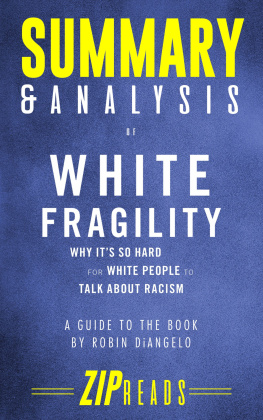

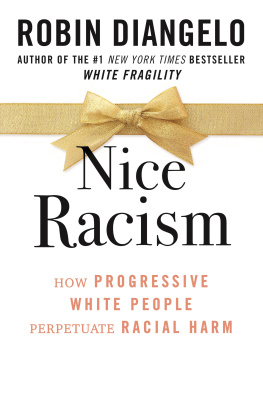
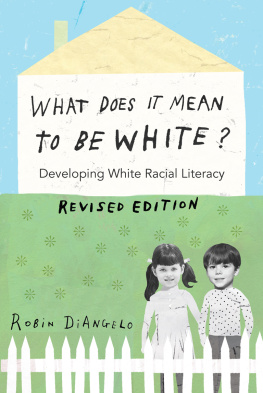
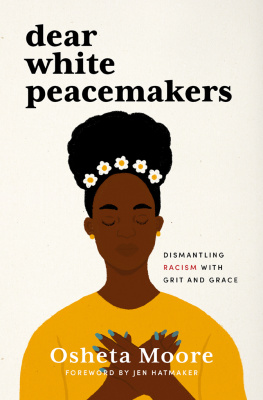
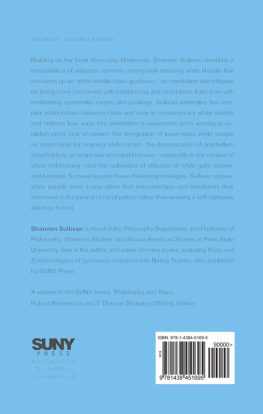
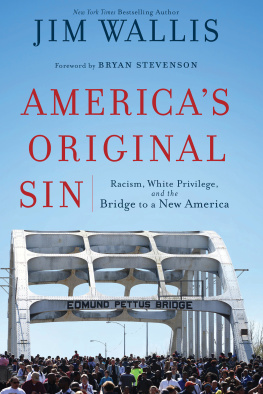
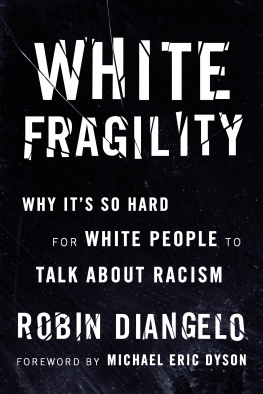


 The paper used in this publication meets the requirements of the American National Standard for Information SciencesPermanence of Paper for Printed Library Materials, ANSI Z39.48-1992.
The paper used in this publication meets the requirements of the American National Standard for Information SciencesPermanence of Paper for Printed Library Materials, ANSI Z39.48-1992.